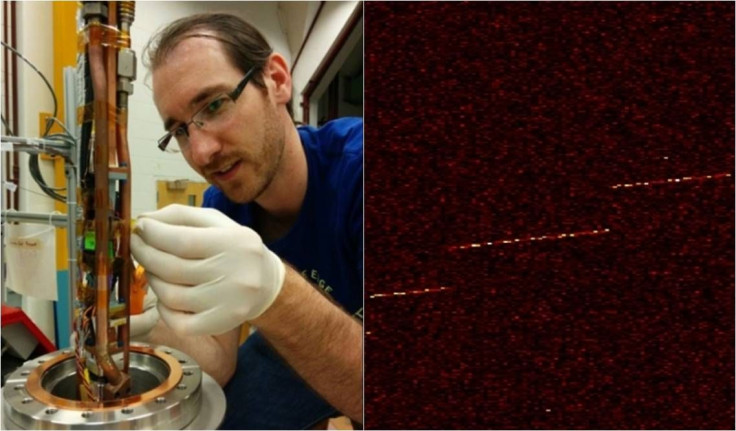New Particle Detector That Can ‘See’ Individual Electrons Developed By Scientists

Scientists at the Massachusetts Institute of Technology (MIT) have developed a new tabletop instrument that can detect individual electrons in a radioactive gas. The development of the new particle detector is being considered as a major step toward measuring the mass of a neutrino, a particle smaller than an atom and with no electrical charge.
As a radioactive gas decays and emits electrons, the detector -- created as part of an experiment dubbed “Project 8” -- uses a magnet to trap them in a magnetic bottle. A radio antenna then catches very weak signals released by the electrons, which, according to scientists, can be used to accurately map the electrons’ activity over several milliseconds. The latest findings were published in the journal Physical Review Letters on Monday.
“We can literally image the frequency of the electron, and we see this electron suddenly pop into our radio antenna,” Joe Formaggio, an associate professor of physics at MIT, said in a statement. “Over time, the frequency changes, and actually chirps up. So these electrons are chirping in radio waves.”
As part of the new study, the researchers recorded the activity of more than 100,000 individual electrons in Krypton gas. According to them, the newly developed instrument can help measure the mass of a neutrino, which is believed to be extremely difficult to detect as it does not appear to interact with ordinary matter.
“We have [the mass] cornered, but haven’t measured it yet,” Formaggio said. “The name of the game is to measure the energy of an electron -- that’s your signature that tells you about the neutrino.”
The newly developed particle detector is based on a decades-old phenomenon, called “cyclotron radiation,” in which charged particles such as electrons emit radio waves at a frequency similar to that of military radio communications.
“If you could measure the frequency of this radio signal, you could measure the energy potentially much more accurately than you can with any other method,” Daniel Furse of MIT and the study’s co-author, said in the statement.
The researchers took five years to develop an accurate detector, which -- after it was turned on for the first time -- recorded individual electrons within the first 100 milliseconds of the beginning of the experiment.
The new detector “represents a very significant result,” Steven Elliott, a technical staff member at Los Alamos National Laboratory in New Mexico, said in the statement. “This was the first step, albeit a very important step, along the way to building a next-generation experiment.”
© Copyright IBTimes 2024. All rights reserved.






















